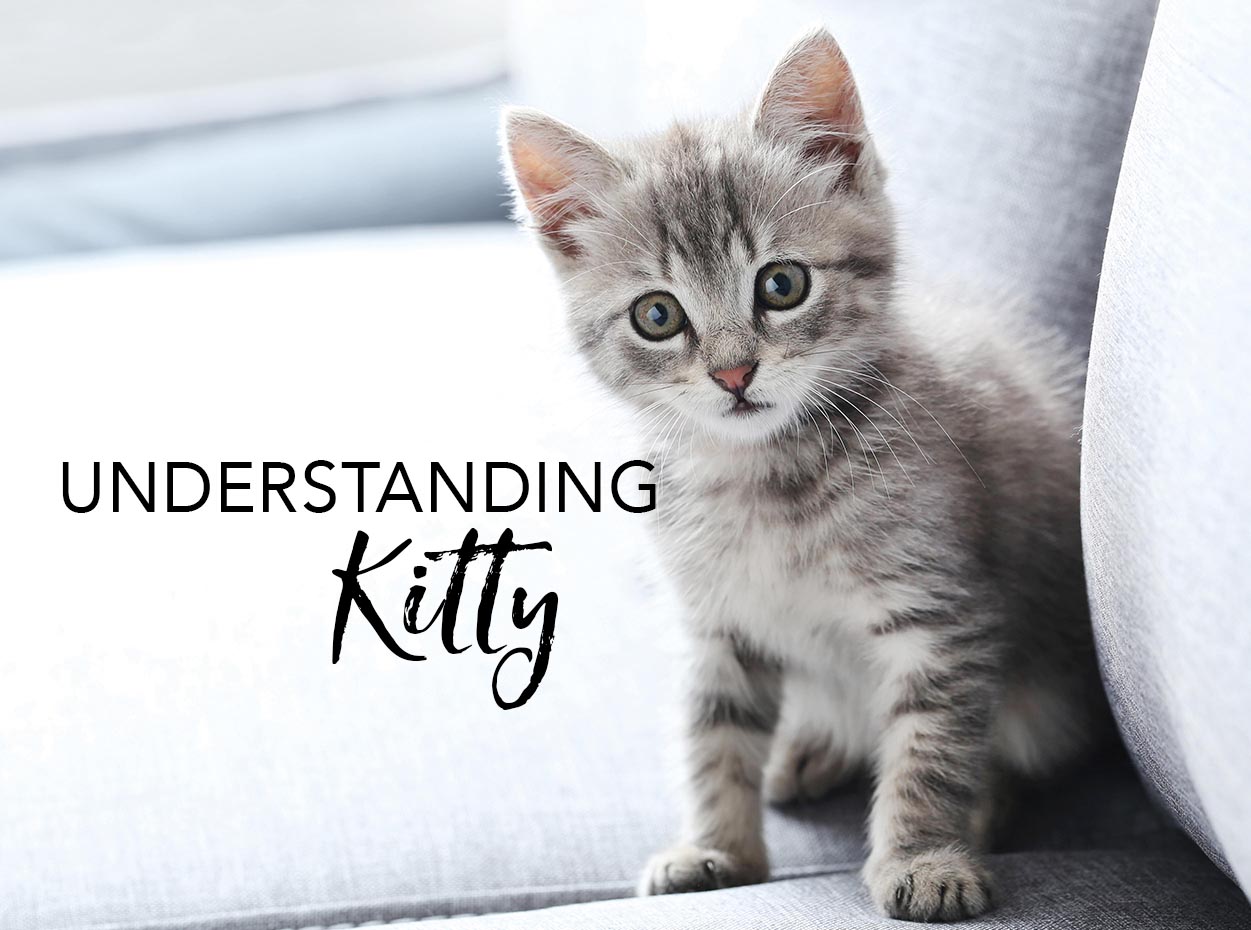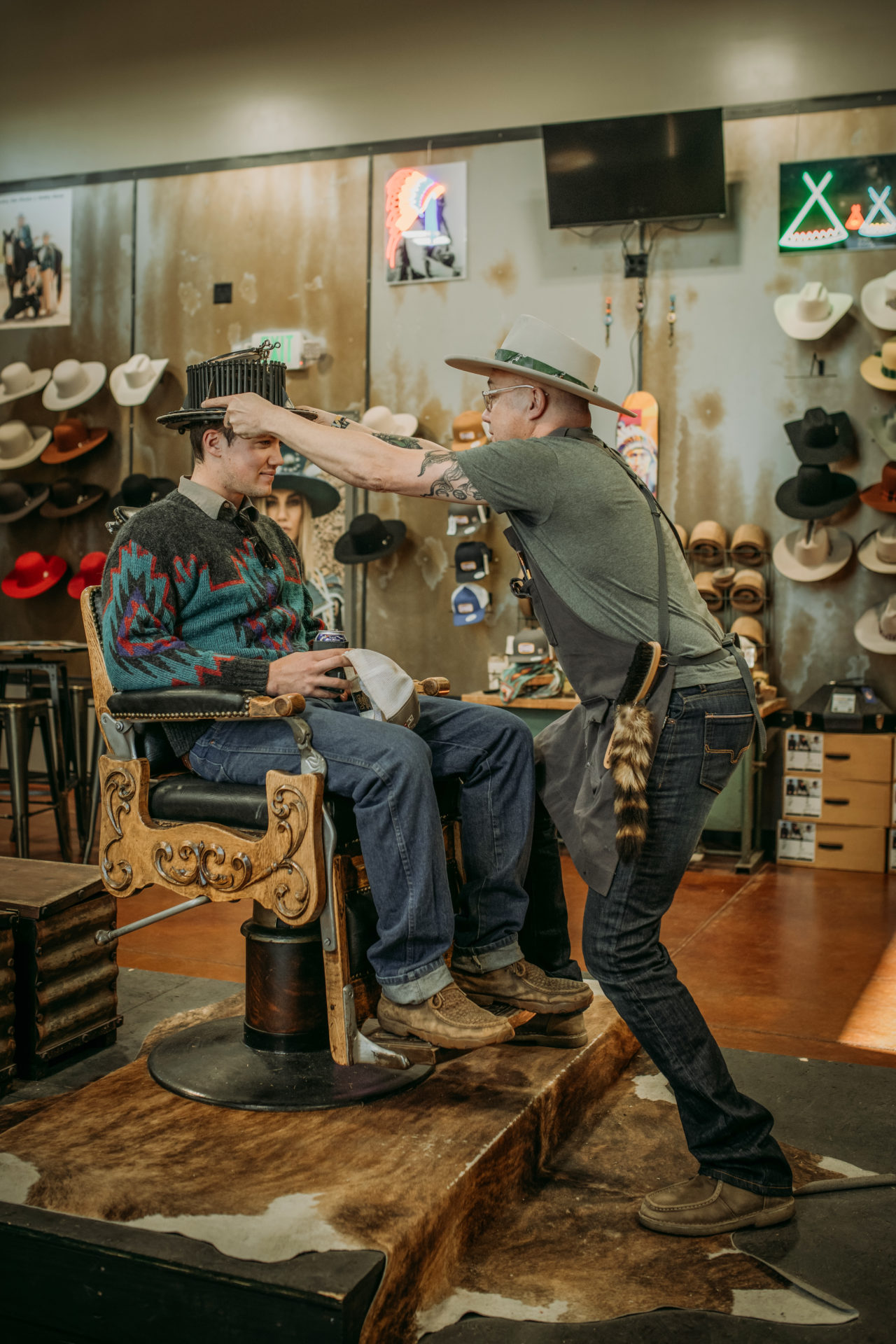By Mary Beth Skylis
If you’re thinking about adopting a cat for the first time, your mind is probably filled with questions: How can I tell which cat behaviors are normal? What can I do to make sure my kitty has the best home possible? And when can I tell if it’s time to take a trip to the vet?
Navigating unknown cat behaviors can seem daunting, at first. Afterall, they are often thought of as more aloof than their canine counterpart. However, studies have shown that cats are just as loyal as dogs. To decode the feline mystery, NOCO Style had the chance to sit down with Megan Streetman, Director of Philanthropy at the Animal Friends Alliance. Streetman gave us an arsenal of cat behavior tips that are intended to prepare new owners for successful pet parenthood.
What does it mean when your cat chatters?
Chattering and trilling is often a greeting. They’re just saying “hello” to you. And they’re similar to dogs in that they use their nose a lot. So, they want to smell you to learn about you.
When a cat rubs against you, are they releasing pheromones to claim you as their property?
Sort of. Cats have a lot of different pheromones, so it depends on what they’re doing and how they’re marking. You’re probably referring to the F3 pheromone. When they rub their face on items, they’re releasing this calming pheromone. They’re making themselves more comfortable with the object that they’re rubbing. If there’s something new in their environment, they’ll rub against it to say, “Ok. I’m ok with this being here.” That way, they can smell the pheromone at a later time, so they know it is part of the environment.
What does it mean when your cat chews on non-food items?
It could indicate a number of different things. A lot of times it’s frustration related. Either they’re hungry or want to play. So, they take it out by chewing to ease their anxiety a bit. Occasionally, it can be associated with disease but it’s a loose correlation. If they’re doing it a lot, we would recommend a vet visit just in case. Sometimes it’s an indication that your cat has GI issues.
Is it normal for a cat to have the 2 a.m. zoomies?
You better believe it! It’s totally normal. Cats aren’t exactly nocturnal, but they’re most active at dawn and dusk. They’re naturally most active as you’re falling asleep or waking up. If that’s hard to handle, cats are really good at routine. They love structure in their day-to-day life. They like to be fed at the same time every day, play at the same time, and poop at the same time every day. To control the zoomies, I’d adjust their play schedule. Give them a really good play session before you go to bed every night. It tends to tire them out. And then that becomes their routine and they don’t want to change it. It can be hard to break habits in cats. But they’re very trainable and teachable.
What does it mean when your kitty doesn’t make it to the litter box?
This is a very common question. We all want our cats to use the litter box. If they suddenly stop using it, the very first thing that we recommend is taking your pet to the vet. Very frequently, abruptly refusing to use the litter box can be an indication of a medical issue (varying from stress to urinary issues).
Sometimes the cat heals itself, but those behavioral issues can continue. If medical issues are ruled out and its behavioral, a lot of times it has more to do with the cat’s dissatisfaction with its current litter box. Something might have changed to have them not like the litter box situation anymore. The question is why? Did the washing machine scare them too much and now they can’t use it anymore? Or did some furniture move and now they feel uncomfortable?
There are a lot of different possibilities but it generally starts with the litter box itself. It could relate to cleaning with the litter box. Maybe they want a cleaner environment and they’re just trying to find an alternative that works better for them. It’s a whole process. There’s not usually an immediate quick fix. Sometimes it’s a long, drawn out process to figure out what the issue is and then retraining them.

What else should new pet owners look out for?
I think adjusting the pet to the new environment is the most important thing to focus on. You’re so excited to bring a new pet home and it’s easy to want to introduce them to everything all at once. But, for cats especially, we recommend keeping them in a small area at first like a bedroom or bathroom. Small spaces are easier to adjust to. It’s hard to adjust them to a lot at once. Helping them slowly is really important.
What can you do to make sure your cat has the optimal living conditions?
Obviously providing good nutrition and a litter box is important. But in addition to that, for cats that live indoors, it’s important to provide exercise. We don’t think about it as much for a cat but it’s important to provide toys or a cat tree in the window. It’s really about finding what activity your cat enjoys, and not only provide that, but also encourage it.
How frequently should you take your cat in for care?
It depends on the cat. For younger kittens, we’re looking at once a month because they’re going to finish their series of vaccinations. After that, we recommend sticking to your vet’s recommendations. Most suggest about a yearly visit for vaccinations and health checks. And senior kitties often come in every 6 months or more depending on the cat.
Is there anything else we should know about the shelter?
We’re really emphasizing the pet care resources that we offer. Aside from just adopting out cats and dogs, our organization offers spade and neutering services, and we also have a pet food pantry that distributes about 50,000 pounds of food per year for families who are struggling. We want to help families find a way to keep their cats in the house so they don’t become homeless. The #1 priority is to keep cats in homes.
Fort Collins Cat Rescue and Animal House Merge
This month, an official merger will take place between the Fort Collins Rescue Center (for cats) and the Animal House (for dogs). The two organizations will become the Animal Friends Alliance.
By combining resources and being able to work closely together, they’re hoping to increase their bandwidth and ability to help animals, according to Megan Streetman, Director of Philanthropy at the Alliance. The locations will remain the same and offer the same services. As they’re able to identify their joint needs, they hope to shift practices to provide the best animal rescue centers possible. They’re expecting to have fewer duplicate expenses, which will allow them to increase income, and in turn, allow them to house more pets and to eventually grow their companies.
If the community would like to get involved with the shelter on a regular basis, there’s a volunteer program available. Between the two companies, they have more than 1,000 regular volunteers. They need foster homes, dog walking, outreach and more. Beginning in January, the program will accepting new volunteers. “And we’re really excited to provide opportunities to work with dogs or cats or both,” says Streetman.
Currently, adoptions for each organization function in a similar way. Those who are looking to adopt a pet fill out a questionnaire, which is used to start the conversation. Together, the shelter works with the potential adopter to make sure they match the right pet to the right owners. For example, potential dog owners need adequate outdoor space so their pet can be exercised. Cats don’t necessarily need the same environment but they have other criteria that’ll determine the best match. Visit fccrsnc.org for more information.






